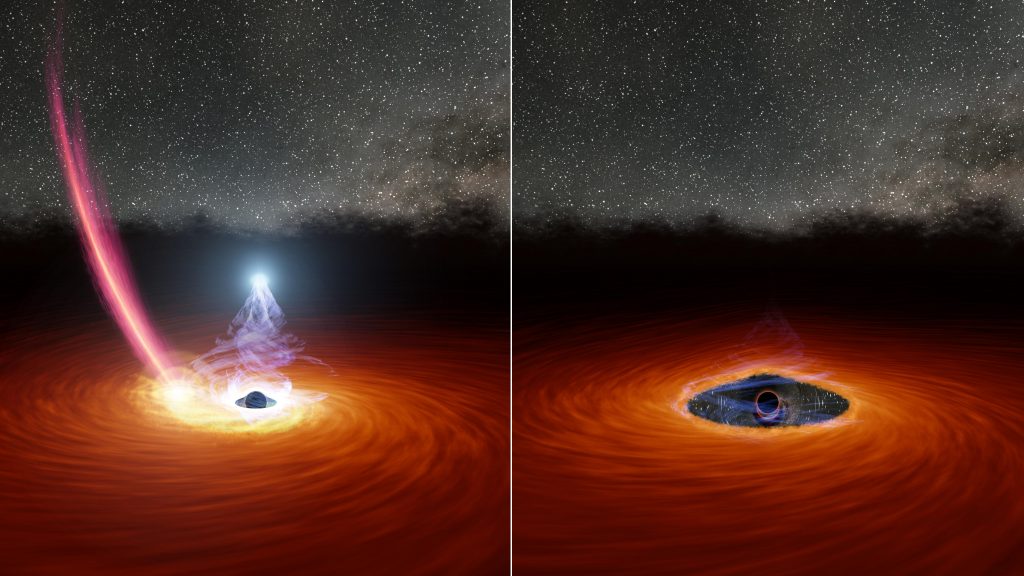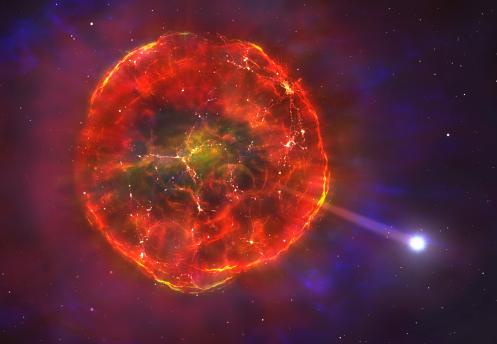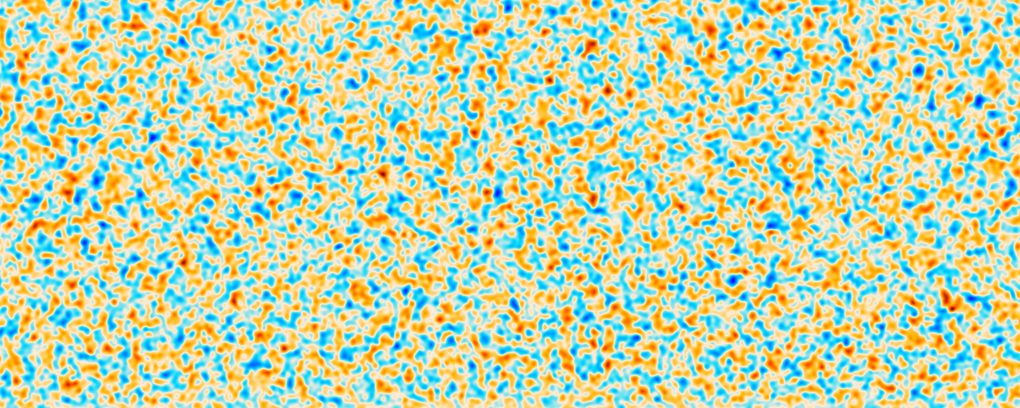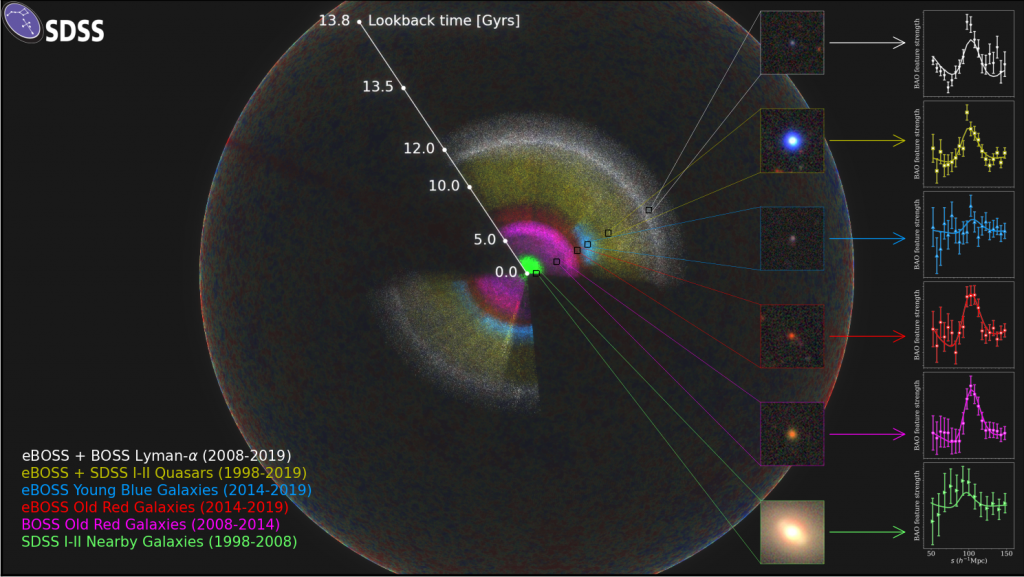Media
Transcript
Welcome back, everyone. This is the most Monday of Mondays for everyone around CosmoQuest. This weekend we hosted our CosmoQuest-a-Con event, and after experiencing 2.5 days of amazing content, we are all a little hungover on information overload. It is a glorious feeling but also one that meant the sight of a wall of amazing press releases this morning was a little intimidating.

Where to start…
Yesterday, in what felt like a surprise move, the United Arab Emirates and Japan took advantage of a pocket of good weather to launch the Al Amal (Hope) mission on its journey to Mars. This is the first interplanetary mission from any Arabic speaking nation, and it is the first Mars launch of the 2020 launch window.
From space explorers and procrastination, we now turn toward that pile of press releases.
It seems that our current global pandemic is even starting to affect science writers. The Massachusetts Institute of Technology (MIT) press release on our first story starts: It seems the universe has an odd sense of humor. While a crown-encrusted virus has run roughshod over the world, another entirely different corona about 100 million light-years from Earth has mysteriously disappeared.

In space-related sciences, a corona is the region of superheated gas surrounding an object like our Sun or a black hole. Objects that have the same spiky, surrounding structure, like corona-viruses, get their names from the much bigger and meaner celestial originals.
In this case, the corona in question is the biggest and meanest of all: it is the corona around a galaxy’s supermassive black hole.
In a new paper published in the Astrophysical Journal Letters with lead author Claudio Ricci, astronomers document the fade away of the X-ray corona of galaxy 1ES 1927+654. Using the Neutron Star Interior Composition Explorer (NICER) X-ray observatory on the International Space Station, they say this system faded by a factor of 10,000 over just forty days, and then, after one hundred days of quiet, it rose back up in brightness to be twenty times brighter than before.
The corona around supermassive black holes in galaxies is created by material getting superheated as it falls into the black hole via an accretion disc, and the best way to explain this kind of a temporary fading is through a disruption in that accretion disc. They theorize that a runaway star may have wandered too close to the center of this galaxy and been disrupted by the supermassive black hole, and its debris may have, in turn, disrupted the accretion disk. According to Ricci: We just don’t normally see variations like this in accreting black holes. It was so strange that at first, we thought maybe there was something wrong with the data. When we saw it was real, it was very exciting. But we also had no idea what we were dealing with; no one we talked to had seen anything like this.
Erin Kara, a co-author of this study, goes on to explain: This dataset has a lot of puzzles in it. But that’s exciting because it means we’re learning something new about the universe. We think the star hypothesis is a good one, but I also think we’re going to be analyzing this event for a long time.
Astronomy can be super frustrating. We can’t run experiments or recreate galaxy-spanning events in our labs. When we see weird and rare events, it is thanks to the luck of looking in the right place at the right time, and the one data set we collect may be the only one we collect. While the idea of an infalling star is a solid one that fits the data, we may never know if this is what actually happened. All we know for sure is that a supermassive black hole’s corona 300 million light-years away faded for forty days and came back brighter than ever before.
This idea of a runaway star isn’t as far fetched as it may sound. Stars can get flung hither and yon through a variety of processes, and in a new paper in the Monthly Notices of the Royal Astronomical Society with lead other Boris Gansicke, a truly odd star has been caught fleeing at breakneck speeds across our own galaxy. This object is traveling at 900,000 km/hr and appears to be the survivor of a supernova explosion.

This tiny star – tiny even for a white dwarf – is about the size of the Moon and 40% the mass of the Sun, and its surface appears composed of an unusual mix of oxygen, neon, magnesium, and silicon with a side of carbon, sodium, and aluminum. All these elements can be produced in a thermonuclear supernova.
According to Gainsicke: This star is unique because it has all the key features of a white dwarf but it has this very high velocity and unusual abundances that make no sense when combined with its low mass. It has a chemical composition which is the fingerprint of nuclear burning, a low mass, and a very high velocity: all of these facts imply that it must have come from some kind of close binary system, and it must have undergone thermonuclear ignition. It would have been a type of supernova but of a kind that we haven’t seen before. If it was a tight binary and it underwent thermonuclear ignition, ejecting quite a lot of its mass, you have the conditions to produce a low mass white dwarf and have it fly away with its orbital velocity.
To get this kind of an event, two stars need to be in a close binary, where a white dwarf can feed on its companion star until it reaches a mass at which it can ignite as a supernova. In this situation, however, it appears that ignition was incomplete and worked more like a nuclear bomb-powered rocket engine attached to the small star. As the press release summarizes: SDSSJ1240+6710 may be the survivor of a type of supernova that hasn’t yet been “caught in the act”. Without the radioactive nickel that powers the long-lasting afterglow of the Type Ia supernovae, the explosion that sent SDSS1240+6710 hurtling across our Galaxy would have been a brief flash of light that would have been difficult to discover.
Our universe is a weird and often confusing place. Trying to get a handle on all that is going on takes myriad telescopes that work from on the Earth to in orbit around the Earth to try and build as complete a picture of our changing sky as possible.

Today’s news has so far covered X-rays with NICER, optical observations with telescopes including the Hubble Space Telescope, and now we travel out to the microwave, where a new paper on arXiv and shared out by the Simons Foundation uses the Atacama Cosmology Telescope to look at the small scale variations in polarization in the cosmic microwave background (CMB) radiation to try and measure the age of the universe. They estimate the age at 13.77 billion years, give or take 40 million years, an age consistent with that determined by the Planck telescope, which also studied various characteristics of the CMB. This would correspond to a Hubble Constant of 67.6 km/s per megaparsec of space.
While this new paper, with lead author Simone Aiola, stresses that these results are accurate, match Planck, and point to an older universe, these results don’t match observations based on observing the expansion that has been taking place for most recent 11 billion years. Those models are coming up with a universe that is substantially younger and expanding faster.

As often happens in science, this paper from Aiola comes at the same time as competing research, looking at that expansion rate from the perspective of galaxies, and that new research is more than we could consume in time to thoroughly prepare for today’s show. This is because the extended Baryon Oscillation Spectroscopic Survey (eBOSS) team has released dozens of papers that combine to more than 500 pages of observations and analysis of galaxies across 11 billion years of the universe’s evolution. Using data from the Sloan Digital Sky Survey, they find, once again, this time not using the CMB, that the expansion rate in the early universe is about ten percent lower than the value found from the distances to nearby galaxies. According to team researcher Eva-Maria Mueller: Only with maps like ours can you actually say for sure that there is a mismatch in the Hubble Constant. These newest maps from eBOSS show it more clearly than ever before.
As is pointed out in the press release: There is no broadly accepted explanation for this discrepancy in measured expansion rates, but one exciting possibility is that a previously unknown form of matter or energy from the early Universe might have left a trace on our history.
This is a tremendous result, and I’m going to be digging into these papers in the coming days. Prior to this moment, we had two data sets, one for the early universe that showed an older universe and slower expansion and one for the current universe that showed a younger universe with faster expansion. Now, we have data spanning these two epochs that makes it clear the universe’s behavior changed over time.
I no longer know exactly how old the universe is. Somewhere between 13.5 and 14 billion is guaranteed, I think, but everything else is a bit of an uncomfortable mess, and this is a lot to take in on a Monday morning.

Rather than end on this uncomfortable note, I’d like to turn for a moment to astronomical sleuthing, and the work of Donald Olson, Russell Doescher and Doescher’s students who have been working to understand exactly when Johannes Vermeer painted his famous “View on the Delft” painting.
This Dutch city is now a wild tangle of bikes, cars, and buildings old and new, but in this painting, we see a quieter time, and the combination of lighting and cloud makes it hard to immediately grasp this painting’s time of day. After traveling to Delft to find the location where this was painted, the team is able to say the painting captures roughly 8 am on or about September 3. It’s estimated it was painted no later than 1659. This painting was done from the second floor of an inn that overlooked the city. They were able to sort sightlines and determine where and when they needed to look thanks to tools available in Google Earth.
This is just the latest in a long series of paintings that Donald Olson and his collaborators have understood through science across several decades. This is really satisfying work that has consistently appeared in Sky and Telescope magazine.
Learn More
Astronomers Watch a Black Hole’s Corona Disappear, Then Reappear
- MIT press release
- NASA Jet Propulsion Laboratory press release
- “The Destruction and Recreation of the X-Ray Corona in a Changing-look Active Galactic Nucleus,” C. Ricci et al., 2020 July 16, Astrophysical Journal Letters (Preprint on arxiv.org)
Blast Sends Star Hurtling Across the Milky Way
- University of Warwick press release
- “SDSS J124043.01+671034.68: The Partially Burned Remnant of a Low-Mass White Dwarf that Underwent Thermonuclear Ignition?” Boris T. Gänsicke et al., 2020 July 15, Monthly Notices of the Royal Astronomical Society (Preprint on arxiv.org)
New View of Oldest Light Adds Twist to Debate over Universe’s Age
- Simons Foundation press release
- “The Atacama Cosmology Telescope: DR4 Maps and Cosmological Parameters,” Simone Aiola et al., 2020 (Preprint on arxiv.org)
- “The Atacama Cosmology Telescope: A Measurement of the Cosmic Microwave Background Power Spectra at 98 and 150 GHz,” Steve K. Choi et al., 2020 (Preprint on arxiv.org)
11 Billion Years of Cosmic Expansion History Filled In
‘Celestial Sleuth’ Sheds New Light on Vermeer’s ‘View of Delft’
Credits
Written by Pamela Gay
Hosted by Pamela Gay
Audio and Video Editing by Ally Pelphrey
Content Editing by Beth Johnson
Intro and Outro music by Kevin MacLeod, https://incompetech.com/music/


 We record most shows live, on Twitch. Follow us today to get alerts when we go live.
We record most shows live, on Twitch. Follow us today to get alerts when we go live.